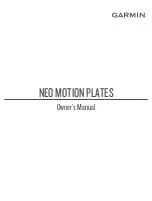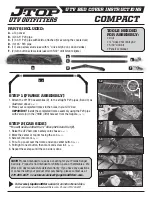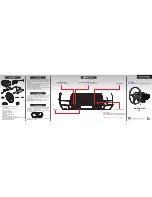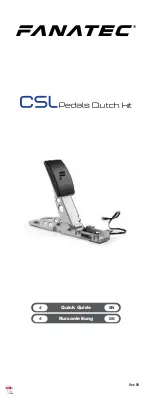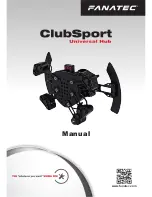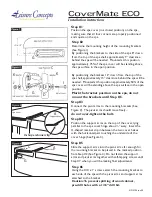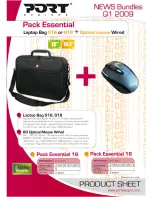
45
Temposonics
®
TH CANbus ATEX / IECEx / CEC / NEC / KCs / EAC Ex certified / Japanese approval
Operation Manual
6. Maintenance and troubleshooting
6.1 Error conditions, troubleshooting
See chapter “5.6.1 Layer Setting Service (LSS)” on page 31.
6.2 Maintenance
The required inspections need to be performed by qualified personnel
according to IEC 60079-17 / TRBS 1203. These inspections should
include at least a visual inspection of the housing, associated electrical
equipment entrance points, retention hardware and equipment
grounding. Inside the Ex-atmosphere the equipment has to be cleaned
regularly. The user determines the intervals for checking according
to the environmental conditions present at the place of operation.
After maintenance and repair, all protective devices removed for this
purpose must be refitted.
NOTICE
Perform maintenance work that requires a dismantling of the
system only in an Ex-free atmosphere. If this is not possible take
protective measures in compliance with local regulations.
Maintenance: Defines a combination of any actions carried out to
retain an item in, or restore it to, conditions in which it is able to meet
the requirements of the relevant specification and perform its required
functions.
Inspection: Defines an activity with the purpose of checking a
product carefully, aiming at a reliable statement of the condition of
the product. The inspection is carried out without dismantling, or,
if necessary, with partial dismantling, and supplemented by other
measures, e.g. measurements.
Visual inspection: Optical inspection of product aims at the
recognition of visible defects like missing bolts without using auxiliary
equipment and tools.
Fig. 28: Schedule of inspection
Type of
inspection
Visual
inspection
every 3 months
Close
inspection
every 6 months
Detailed
inspection
every 12 months
Visual
inspection of
the sensor for
intactness,
removal of
dust deposits
Check of
electrical system
for intactness
and functionality
Check of entire
system
User’s responsibility
Close inspection: Defines an inspection which encompasses those
aspects covered by a visual inspection and, in addition, identifies those
defects, such as loose bolts, which will be apparent only by the use of
access equipment, for example steps, where necessary, and tools.
Detailed inspection: Defines an inspection which encompasses those
aspects covered by a close inspection and, in addition, identifies those
defects, such as loose terminations, which will only be apparent by
opening the enclosure, and / or using, where necessary, tools and test
equipment.
6.3 Repair
Repairs of the sensor may only be performed by MTS Sensors or
a repair facility explicitly authorized by MTS Sensors. Repairs of the
flameproof joints must be made by the manufacturer in compliance
with the constructive specifications. Repairs must not be made on the
basis of values specified in tables 1 and 2 of IEC/EN 60079-1.
6.4 List of spare parts
No spare parts are available for this sensor.
6.5 Transport and storage
Note the storage temperature of the sensor, which is from
−40…+93 °C (−40…+200 °F).
7. Removal from service / dismantling
The product contains electronic components and must be disposed of
in accordance with the local regulations.
























